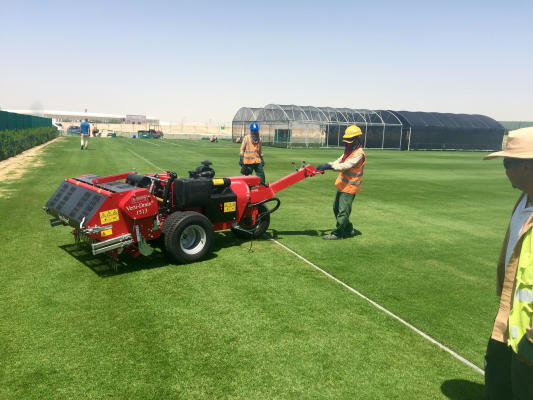Scientists at Qatar University are testing 3D-printed models of football stadiums that Qatar is building for the 2022 World Cup to see if they can endure the Gulf state’s harsh desert climate.
Qatar has sought to relieve concerns about its summer heat and moved the competition to the cooler month of November. It also announced details of five stadiums with built-in air conditioning. But Qatar still experiences sand and dust storms in winter months. It also wants the stadiums to be used all year round beyond the 2022 tournament, Saud Ghani, a Qatar University engineering professor, said.
For this, the team from Europe and the Middle East are exploring how the stadiums can be adapted to handle sand storms and searing heat. “We’re looking at aerodynamics, how changing the shape of the stadium affects the dust, heat and wind inside,” Ghani said.
“Qatar wants venues that can be used all year. They don’t want white elephants,” he added.
The 3D-printed stadiums, which take about a month to assemble, are placed in a wind tunnel that blows smoke-filled air tracked by laser beams across the design to measure turbulence inside. The impact of sand storms, which occur occasionally in Qatar during the winter months, could be mitigated by raising or lowering the stadium height by a few metres, Ghani said.
“The idea is to stop hot wind getting in. Like an open-top car, you want air flying over not swirling inside,” he said, pointing to smoke billowing around a cavernous black stadium inside the wind tunnel.
Qatar has announced details of five of at least eight stadiums it must build or renovate for the World Cup at an estimated cost of $8-$10 billion. The Qatar University engineers have run tests on two stadiums – Al Bayt and Al Wakrah, designed by the late British architect Zaha Hadid. A model of the upcoming Al Thumama Stadium is now being printed for testing.
Balancing architectural character – like the sweeping Bedouin tent design for the Al Bayt stadium – with efficient aerodynamics can sometimes be tricky, said 24-year-old engineer Fahad al-Musalam.
“Each stadium has a message to convey and we need to preserve that character,” said Musalam.
3D printing has been used by engineers to build prototypes for decades but has recently become more widespread, with uses including the production of dental crowns and light aircraft parts.
